#petrology
Text
sorry your boyfriend got subducted. yeah he’s reintegrating with the mantle and sinking down to the core mantle boundary where he’ll heterogenize and be immediately overlayed by more subducted slab material. yeah he’s completely unrecognizable from when he was on the surface and only detectable by slight differences in seismic wave velocity. sorry :/
1K notes
·
View notes
Text
#poll#tumblr poll#rocks#petrology#rocks are cool#my favorite type is igneous#what about you?#feel free to participate#feel free to share
141 notes
·
View notes
Text

My friend who's in another city showed me these lovely local minerals. Some calcite, chalcopyrite, selenite, gypsum, dolomite, and anhydrite. ( ◜‿◝ )♡

This was also very interesting. Any thoughts or knowledges to share? Would appreciate it (from a first year geology student ;))
#rocks#petrology#sedimentary rocks#igneous rock#mineralogy#minerals#crystals#calcite#chalcopyrite#selenite#dolomites#bats#geology
54 notes
·
View notes
Text
It's been over 3.5 months since NASA's OSIRIS-REx spacecraft dropped off its precious sample of asteroid dust, and scientists have finally managed to get the lid off the sample container.
Now, the team can finally complete the steps needed to disassemble the Touch-and-Go Sample Acquisition Mechanism (TAGSAM) container, and access the rocks and dirt collected from asteroid Bennu. Once retrieved, the sample can be divvied up and distributed to science teams around the world.
Continue Reading.
76 notes
·
View notes
Text
While both metamorphic and sedimentary rocks undergo processes that transform them from their original state, they have distinct differences in their formation, characteristics, and properties. Here are the key differences between metamorphic and sedimentary rocks: Read more here:
38 notes
·
View notes
Photo
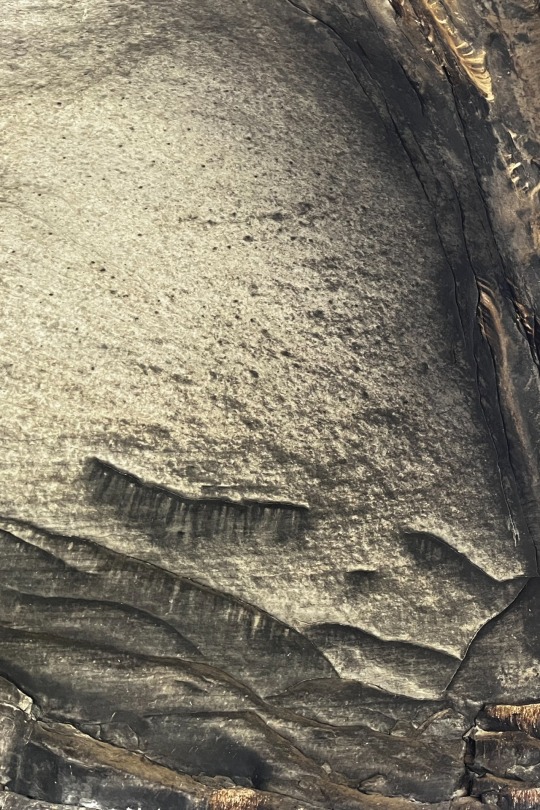
Sleepy Rock? The crazy rock formations inside an ancient Cederberg mountain cave, South Africa. Available as cards & prints at rimarimastudio.etsy.com
Photographs copyright RimaRima 2023
#crazy rock formations#ancient caves#petrology#sinnerman#rimarimastudio.etsy.com#sleepy rock#rimarima
179 notes
·
View notes
Text
Intruded Pelite
#ThinsectionThursday A carbonate vein intruding a 3.2 billion year old pelite. Greenish mineral is chlorite, dirty grey brown material is carbonate, pale grey white material is quartz, opaque material is pyrite. 4x Magnification #Geology #Metamorphic
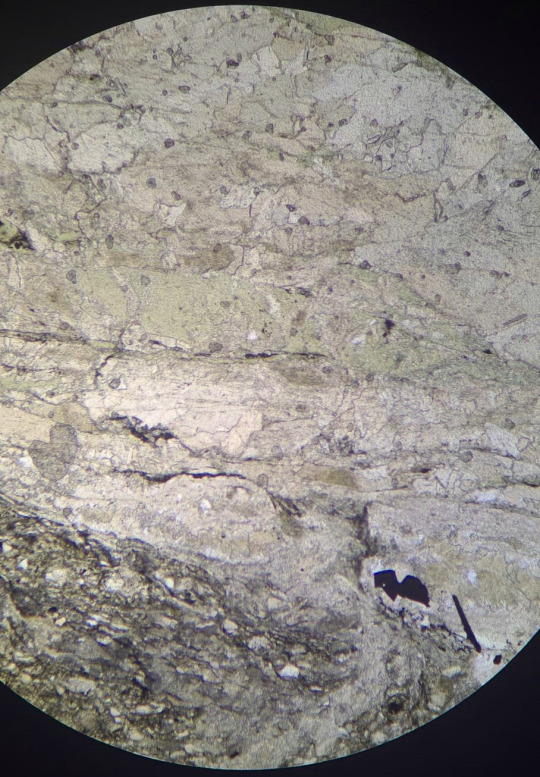
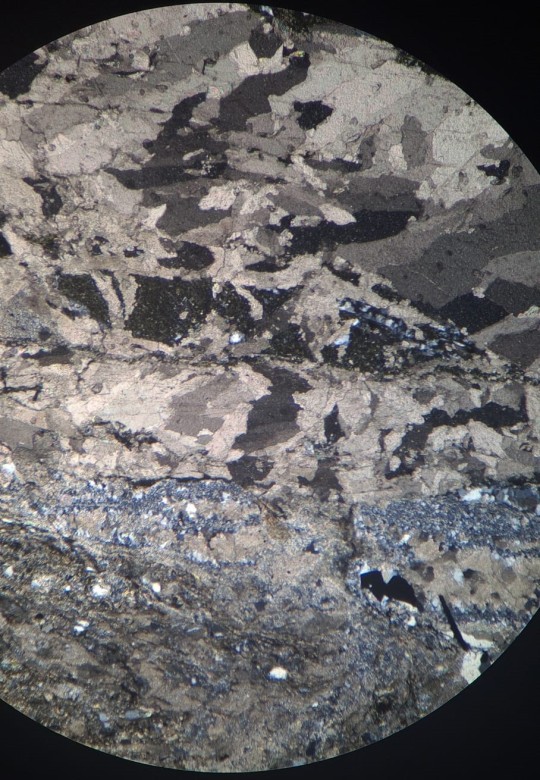
21 notes
·
View notes
Photo
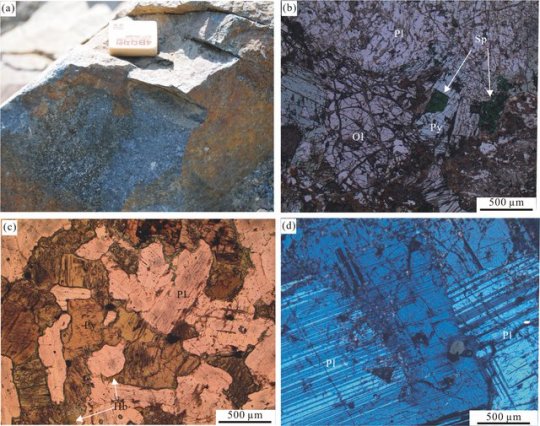
Field and microscopic photos of the olivine-gabbro in the southern Huangling anticline. (Source)
149 notes
·
View notes
Text
petrology is such a cute name for the study of rocks you can’t convince me otherwise
42 notes
·
View notes
Text

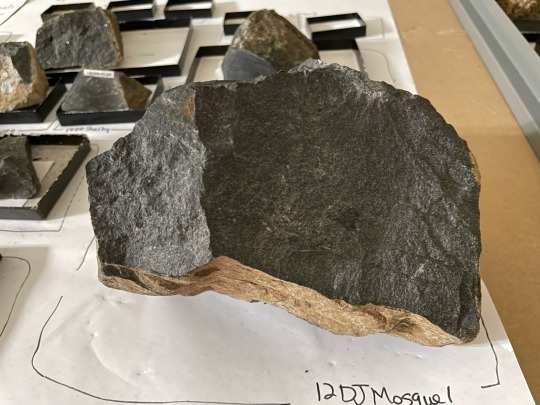


sample vs. thin section part two!
#science with sherrie#sherrie’s shit#geology#finished my petrology course w/ an A/93% 😎#very happy with myself#loved the class too :’)#petrology#igneous rocks#thin section#both thin sections taken at 2x/XPL#via leica petrographic microscope
55 notes
·
View notes
Text

547 notes
·
View notes
Text

Source: LEARN Geology
𝗠𝗮𝗿𝗶𝗻𝗲 𝗟𝗶𝗺𝗲𝘀𝘁𝗼𝗻𝗲: 𝗧𝗵𝗲 𝗛𝗶𝗴𝗵𝗲𝘀𝘁 𝗥𝗼𝗰𝗸𝘀 𝗶𝗻 𝘁𝗵𝗲 𝗣𝗹𝗮𝗻𝗲𝘁
Everest Range, 𝗡𝗲𝗽𝗮𝗹 and 𝗧𝗶𝗯𝗲𝘁, 𝗖𝗵𝗶𝗻a
27°59'17"N / 086°55'30"E
𝙂𝙚𝙤𝙡𝙤𝙜𝙞𝙘𝙖𝙡 𝙋𝙚𝙧𝙞𝙤𝙙:
Middle 𝗢𝗿𝗱𝗼𝘃𝗶𝗰𝗶𝗮𝗻 (𝗗𝗮𝗿𝗿𝗶𝘄𝗶𝗹𝗶𝗮𝗻)
𝘿𝙚𝙨𝙘𝙧𝙞𝙥𝙩𝙞𝙤𝙣:
Mount Everest is 𝗘𝗮𝗿𝘁𝗵'𝘀 𝗵𝗶𝗴𝗵𝗲𝘀𝘁 𝗺𝗼𝘂𝗻𝘁𝗮𝗶𝗻 above sea level, located in the Mahalangur Himal sub-range of the Himalayas. The China–Nepal border runs across its summit point. Its elevation of 𝟴,𝟴𝟰𝟴.𝟴𝟲 𝗺 was most recently established in 2020 by the Chinese and Nepali authorities.
𝗚𝗲𝗼𝗹𝗼𝗴𝗶𝗰𝗮𝗹 𝗗𝗲𝘀𝗰𝗿𝗶𝗽𝘁𝗶𝗼𝗻:
The 𝘀𝘂𝗺𝗺𝗶𝘁 of Mount Everest, the 𝗵𝗶𝗴𝗵𝗲𝘀𝘁 𝗽𝗼𝗶𝗻𝘁 on Earth, was a 𝘀𝗲𝗮 𝗳𝗹𝗼𝗼𝗿 once. 𝗜𝘀𝗻'𝘁 𝘄𝗼𝗻𝗱𝗲𝗿𝗳𝘂𝗹?. The highest rock on Earth, marking the summit of Mount Everest, are 𝗢𝗿𝗱𝗼𝘃𝗶𝗰𝗶𝗮𝗻 𝗟𝗶𝗺𝗲𝘀𝘁𝗼𝗻𝗲𝘀, deposited in a warm, shallow water sea some 𝟰𝟱𝟬 𝗠𝗮 𝗮𝗴𝗼.
These rocks deposited in an 𝗮𝗻𝗰𝗶𝗲𝗻𝘁 𝗧𝗲𝘁𝗵𝘆𝗮𝗻 𝗢𝗰𝗲𝗮𝗻 were thrust and 𝘂𝗽𝗹𝗶𝗳𝘁𝗲𝗱 into their present commanding position when 𝗜𝗻𝗱𝗶𝗮𝗻 𝗽𝗹𝗮𝘁𝗲 𝗰𝗼𝗹𝗹𝗶𝗱𝗲𝗱 with the 𝗔𝘀𝗶𝗮𝗻 𝗰𝗼𝗻𝘁𝗶𝗻𝗲𝗻𝘁 some 𝟱𝟱 𝗺𝗶𝗹𝗹𝗶𝗼𝗻 𝘆𝗲𝗮𝗿𝘀 𝗮𝗴𝗼.

𝗤𝗙: 𝗤𝗼𝗺𝗼𝗹𝗮𝗻𝗴𝗺𝗮 𝗙𝗼𝗿𝗺𝗮𝘁𝗶𝗼𝗻 (𝗘𝘃𝗲𝗿𝗲𝘀𝘁 𝗹𝗶𝗺𝗲𝘀𝘁𝗼𝗻𝗲𝘀):
It is the un-metamorphosed layer of limestone here called ‘QF’ for 𝗤𝗼𝗺𝗼𝗹𝗮𝗻𝗴𝗺𝗮 𝗙𝗼𝗿𝗺𝗮𝘁𝗶𝗼𝗻, which forms the 𝘀𝘂𝗺𝗺𝗶𝘁 of Everest. It is separated from the underlying Yellow Band layer by a low angle detachment fault.
𝗬𝗕:𝗬𝗲𝗹𝗹𝗼𝘄 𝗕𝗮𝗻𝗱:
This is the layered bedding. It is a limestone, formed from a shallow marine sediment, heated to become a 𝗺𝗮𝗿𝗯𝗹𝗲.
𝗘𝗦: 𝗘𝘃𝗲𝗿𝗲𝘀𝘁 𝗦𝗲𝗿𝗶𝗲𝘀:
It consists of 𝘀𝗲𝗱𝗶𝗺𝗲𝗻𝘁𝗮𝗿𝘆 rock which has been metamorphosed at reasonably high temperatures. It is separated from the underlying layer by a low angle almost horizontal fault.
𝗥𝗙: 𝗥𝘂𝗻𝗴𝗯𝗼𝗸 𝗳𝗼𝗿𝗺𝗮𝘁𝗶𝗼𝗻:
The Rungbok Formation consists of ‘LG’ Leuco- granite and gneiss.RF is a gneiss: rock partly melted and metamorphosed under high temperatures.
𝙁𝙤𝙨𝙨𝙞𝙡𝙨:
These rocks still contain the fossils of marine animals such as 𝗕𝗿𝗮𝗰𝗵𝗶𝗼𝗽𝗼𝗱𝘀, 𝗖𝗼𝗻𝗼𝗱𝗼𝗻𝘁𝘀 and 𝗖𝗿𝗶𝗻𝗼𝗶𝗱𝘀 that occupied tropical habitats during one of the most 𝗶𝗺𝗽𝗼𝗿𝘁𝗮𝗻𝘁 𝗶𝗻𝘁𝗲𝗿𝘃𝗮𝗹𝘀𝗹𝘀 in 𝗘𝗮𝗿𝘁𝗵'𝘀 history, the 𝗚𝗿𝗲𝗮𝘁 𝗢𝗿𝗱𝗼𝘃𝗶𝗰𝗶𝗮𝗻 𝗕𝗶𝗼𝗱𝗶𝘃𝗲𝗿𝘀𝗶𝗳𝗶𝗰𝗮𝘁𝗶𝗼𝗻 𝗘𝘃𝗲𝗻𝘁 (𝗚𝗢𝗕𝗘).
#himalayan#mounteverest#ordovician#limestone#nepal#india#tibet#indianplate#eurasianplate#geology#thrust#stratigraphy#sedimentology#petrology#structuralgeology#tethys#earthscience#iugs#unesco#geoheritage#knowledge
32 notes
·
View notes
Text
OK HELLO
this is adressed to the rock/crystal/other geological stuff area of tumblr
i have a rapidly growing rock collection and would like to know if any of them are a specific type of rock or something like that
this is the entire family photo
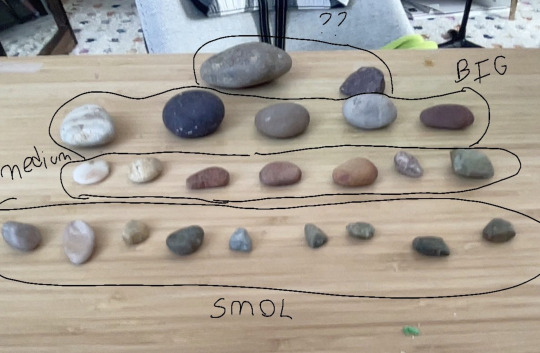
i also have photos of each of the groups when wet (to bring out the color as my comp can't really see the colors that well)

this is the small group, they are mostly green with a few exeptions
#7, 4, and 9 are the least remarkable but the rest have little deposits of (stuff?? darker green mostly)

this is the medium group, these ones have the most color variation so i'll do a shortish desc for each one
#1 is very similar to the green ones of the small group, a bunch of what i assume are deposits
#2 is a yellow-y one with a crease and many little lines. it is very similar to #7 from the small group.
#3 is a reddish/orangeish sandstone-y material, nothing much to say about it
#4 is very similar to #3, but much more red
#5 is pink and has many deposit lines and creases (i really hope i'm using the right terms here lol) looks similar to rose quarts but not transparent and a bit darker
#6 is fully white except for the orange patch and the brown smudge (although that is probably dirt)
#7 is similar to 2 and 3, but much smoother
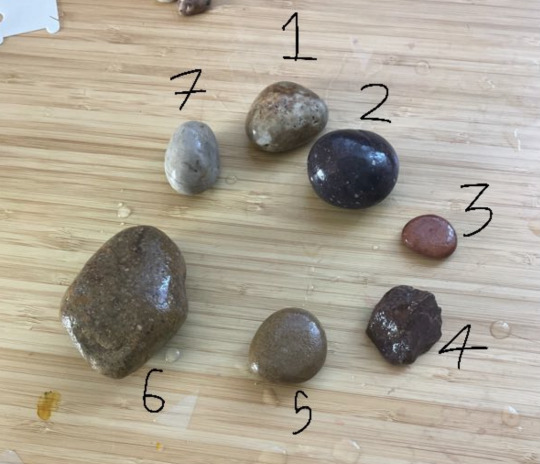
this is the 2 largest groups
the most notable are #1, 2, and 4, so i'll do descriptions for those
#1 seems like a normal rock but it has really thick deposits, and many rust-looking stains
#2 is purple-ish with white dots
#4 is very similar to #2 but without the white dots and it had much more jagged edges
ok very sorry for the long post, and if i used any wrong terms please let me know
(also i'm not sure if i could do an accurate image ID, so it would be great if somebody could do that)
12 notes
·
View notes
Text

I fucking love science involving rocks--no other science can compare to the art of chewing on its study materials
#geology#petrology#my geology professor urged people to lick and taste rocks in order to identify them EXCEPT his own#he claimed he had licked all of his own rocks in his classroom#thus he didnt want his students to 'taste him'
2 notes
·
View notes
Text


Our project is ending and I made every marbled cheesecake brownies to mimic our planting features. Spot the difference!
30 notes
·
View notes
Video
click here for more on rock cards
Oh, sinnerman, where you gonna run to?
Sinnerman where you gonna run to?
Where you gonna run to?
All on that day
We got to run to the rock
Please hide me, I run to the rock
Please hide me, run to the rock
Please hide here
All on that day
But the rock cried out
I can't hide you, the rock cried out
I can't hide you, the rock cried out
I ain't gonna hide you there
All on that day
I said rock
What's the matter with you rock?
Don't you see I need you, rock?
Good Lord, Lord
All on that day
So I run to the river
It was bleedin', I run to the sea
It was bleedin', I run to the sea
It was bleedin', all on that day
So I run to the river
It was boilin', I run to the sea
It was boilin', I run to the sea
It was boilin', all on that day
(Nina Simone, Sinnerman)
7 notes
·
View notes